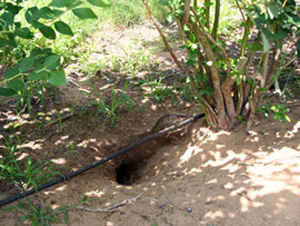Among the many causes of sudden wilting, die back and death of canes are:
Winter Injury:
Cold temperatures can kill canes outright above the snow-line, although the floral buds are most susceptible to injury. Cut buds open to determine if floral tissues are brown.

Fluctuating spring temperatures can result in plants looking normal until temperatures rise in late spring. New growth and fruiting clusters suddenly collapse and die.

More typically, though, with winter injury, die back occurs to a certain point on the cane, with growth below the die back looking normal.
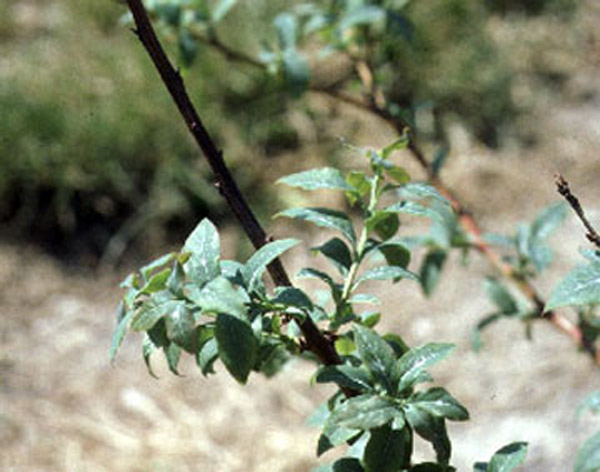
Boron Deficiency:
In rare cases, boron deficiency causes die back of canes without wilting or cankers present. A leaf analysis can verify this diagnosis.

Canker Diseases
Canker diseases may also cause dieback of shoots, and are sometimes confused with winter injury. In many cases, winter injured wood is susceptible to canker infection.
Cankers cause a characteristic flagging of shoots during summer. The canker restricts movement of water and nutrients, causing the cane to wilt and die.
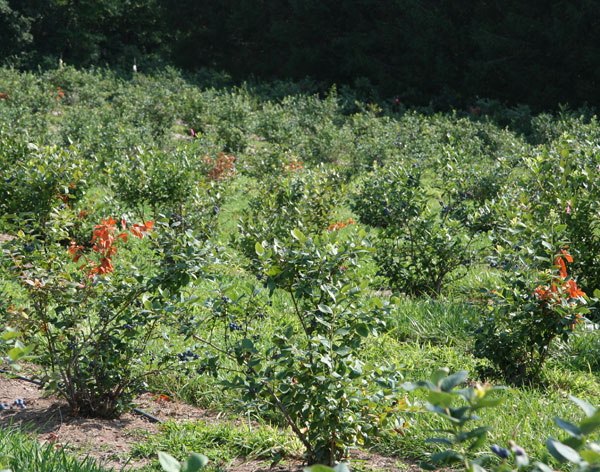
Fusicoccum canker tends to infect the lower portion of canes. On young canes, the lesions look like a bull’s eye.
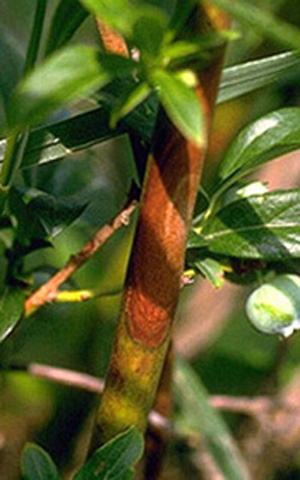
In older canes, the interior wood is brown.
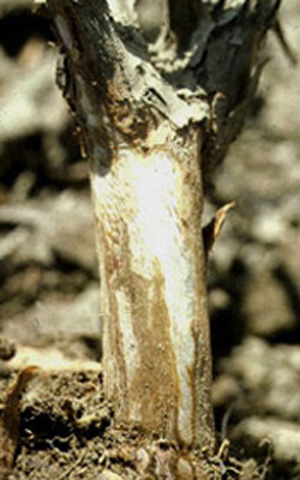
Phomopsis canker infects canes through winter-injured wood, usually the tips of canes.

The canker grows down the cane, gradually killing it. Small spore-producing structures (pycnidia) can be seen on the canker margins.

Cutting into the green wood below the dead portion will reveal brown interior pith if the canker is still active (images below).

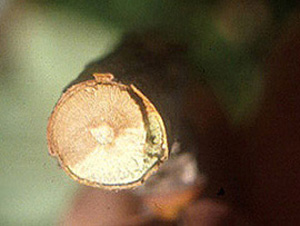
Blueberry Tip Borer
Blueberry Tip Borer (Hendecaneura shawiana) causes drying of terminal leaves and tip wilting in blueberry .

Look for a pinhole, sometimes plugged with frass, below the wilted leaves. Adult moths lay a single egg on succulent shoot tips.
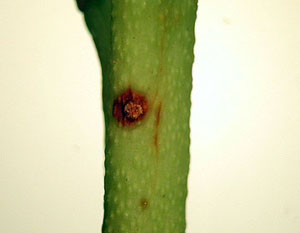
The larva burrows into the shoot and begins feeding.

Terminal leaves dry, and shoot tips wilt.
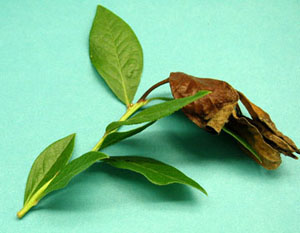
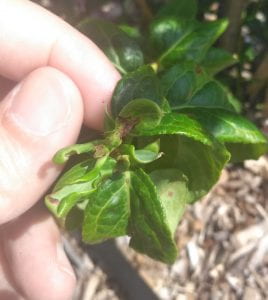
Flatheaded Borer
Flatheaded borers are a group of boring beetles. These beetles will lay eggs in semi-secluded areas along a plant’s bark.
The larvae are distinguishable by their unusually-shaped head, which is large and flattened like a hammerhead shark’s. Larvae will hatch and then bore into cane bases during warm weather, excavating a burrow to overwinter in.
These burrows damage the vascular tissue of the canes. Heavy infestations may kill a bush. Flatheaded borer infestation may cause symptoms similar to nutrient deficiency or canker diseases, as individual canes die back and collapse.


More flatheaded borer information (University of Georgia)
Rodent Damage
Rodent damage may occur during winter as rodents feed on the bark of blueberry plants (especially those that are heavily mulched), either girdling them completely or partially girdling them. Rabbits, mice, and voles will girdle the base of canes when food becomes scarce.


When growth begins in spring, girdled canes will suddenly die from lack of water. Rabbits will also eat cane tips at or above the snow line. Browsed cane tips on blueberries are caused by rabbits – note telltale droppings (click for larger image).


Look for signs of rodent activity including runs, holes, and droppings.
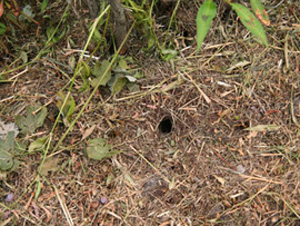
Woodchucks can be a problem in blueberry plantings. Burrow excavation may damage root systems. Burrows also pose a walking hazard to workers and customers.
